When some people outside the therapy world think about therapy, all sorts of ideas come into their head. Sometimes, these ideas, if they are very skewed and incorrect, can prevent people who might need psychotherapy from having it.
This post seeks to confront some of the rumours about therapy, and to correct misunderstandings and misinformation in relation to the therapy experience.
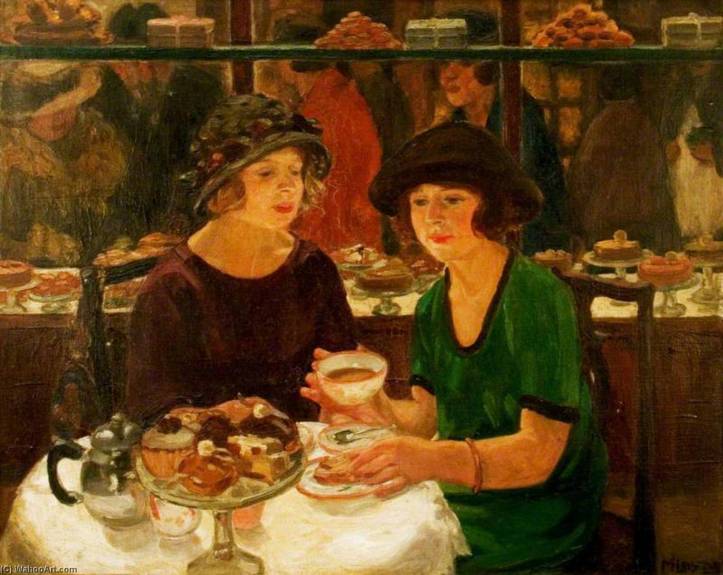 The Tea Table – Mabel Frances Layng. 1937. Wikioo.
The Tea Table – Mabel Frances Layng. 1937. Wikioo.
“The professional must learn to be moved and touched emotionally, yet at the same time stand back objectively: I’ve seen a lot of damage done by tea and sympathy.”
Anthony Storr
- Misconception 1: Therapy is about advice/ friendship/ tea and sympathy/ positive messages/ happy thoughts..
A popular view of therapy is that it involves advice, or is concerned with ways of managing stress, teaching, recommending books, thinking positively, reassurance, and so on. This is (or should be) a total myth, misleading and wholly inaccurate. Such advice is in the ‘tea and sympathy’ mode…..
Psychotherapy is a moving, dynamic process, based on a firmly established therapeutic relationship between therapist and patient. The therapist’s strong, empathic and consistent presence can make it possible for the patient to feel safe enough to explore themselves and share thoughts and feelings about difficulties they are experiencing.
This is with a view to understanding and ultimately working through some of the issues that may be beneath the presenting problems.
Therapy is confidential, has firm boundaries and takes place only within the designated therapy space. It involves considerable sensitivity and empathy on the part of the therapist, but also the ability to ‘stand back objectively,’ as Storr says. This is wholly different from a friendship. The therapist will not share their own issues; this is an ‘equal but different’ relationship, an asymmetrical, professional one.

Geometric Asymmetry.
Apollo Bay, Victoria, Australia © Harendra Alwis. Flickr.
Dr Robert Hobson described this therapy relationship as…
….requir(ing) genuineness and mutuality of feeling in a personal relationship, for only in such a ‘real’ situation can effective learning occur. Yet, it is asymmetrical (slanted, if not one-sided) in that the ultimate concern is the life of the patient.
Dr Robert Hobson, Forms Of Feeling pp201.
‘Tea and sympathy’ have no place in the therapy room. If we were to provide only this, we would be offering a friendly, non-professional listening ear, comfort, solace, kindness and hospitality. Perhaps we might also offer a chunk of home-made cake, a nice hot cuppa, a warm hug, reassurance, a smattering (or more) of advice, and all this might be interwoven with anecdotal titbits about our own or others’ similar experiences.
Therapy is certainly not just about talking. It takes long years of training and it is an art as well as a science. Whilst tea and sympathy may sometimes be necessary in a relationship outside the therapy room, whether with family or friends, it is certainly not therapy.
If therapy begins to spill over into this kind of interaction, it becomes unhelpful, and, as Storr has emphasised, potentially damaging.
Furthermore, it is important to consider the difference between sympathy and empathy. The former has no place in the therapy situation, the latter most certainly does.
- Misconception 2: Therapy consists of an ‘off the peg’, ‘one style suits all’ approach.
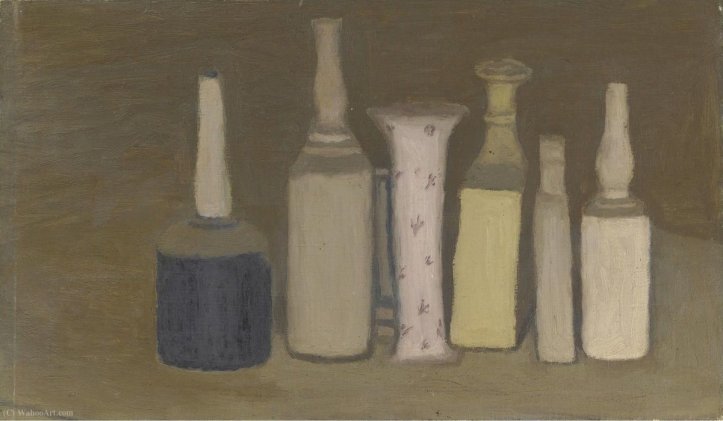 Untitled (197) – Giorgio Morandi. Wikioo.
Untitled (197) – Giorgio Morandi. Wikioo.
“Psychotherapy is essentially concerned with people, not conditions or disorders, and its methods arise out of an intimate relationship between two people that cannot easily be reduced to a set of prescribed techniques. One of the most robust findings in psychotherapy research is that a good therapeutic alliance is the best predictor of outcome in psychotherapy, which suggests that specificity needs to be sought at a much deeper level than therapy brand names.”
Everyone is different; applying manualised approaches to therapy carte-blanche will mean that we miss the individual person and administer the same ‘one size fits all’ format. People do not fit so neatly into categories, structures or boxes. Each therapy needs to be sensitively offered to every person in a different way; this depends on how the patient responds to us, for the patient leads the way.
Rather than rush in with a formulaic, established ‘treatment’ plan, the authentic therapist will be patient-centred, focussing on the person’s own needs and maintaining a non-directive stance.
Therapy is about mutuality and the establishment of a flexible, empathic and collaborative relationship, a working-together. It is not about imposing a set of mechanical techniques on someone who is vulnerable and needy. The psychotherapy experience, an ‘accompanied’ journey into the self, is different for everyone; therapists also differ in their approaches; no two therapists are the same.
Therapy is about a relationship, with an individual, one that is professional, boundaried… and crucial to the practice of ‘good’ psychotherapy.
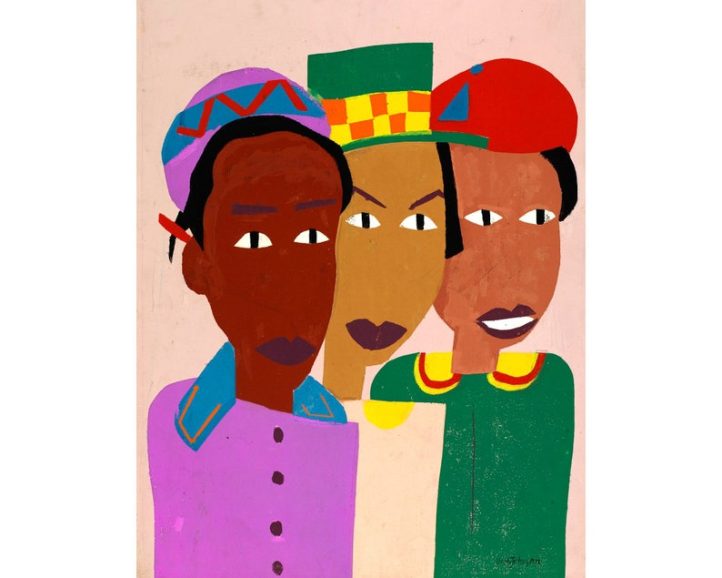
Three Friends, by William H. Johnson. c. 1944-5. Wikimedia Commons.
“We need to go even further: the therapist must strive to create a new therapy for each patient.”
Irvin D. Yalom, The Gift of Therapy
- Misconception 3: Psychotherapy involves teaching, lecturing or instruction/recommending books/ being the fount of all wisdom, a guru.
If we are seeking a quick-fix, instant solution for our problems, a band-aid, or if we have the expectation that we will be ‘cured’ after one or two sessions, then psychotherapy is not for us. This would be magic, and this is not what therapy is about.
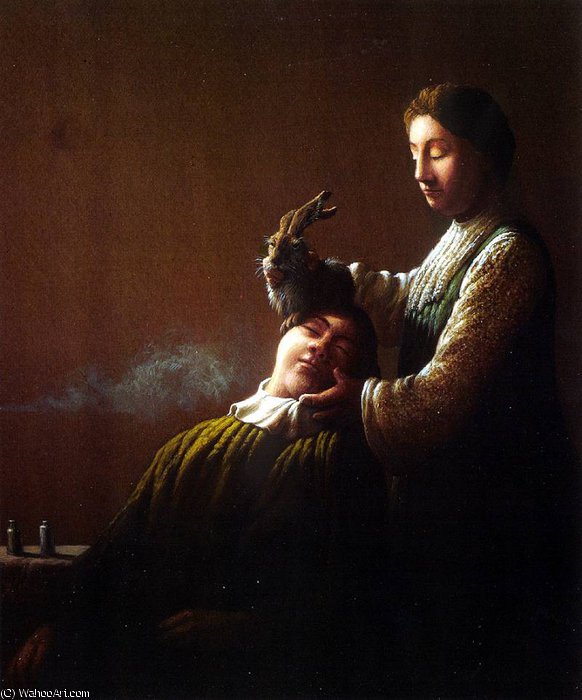
Instant Relief Therapy – Michael Sowa. (b.1945) Wikioo.
On the contrary, therapy can be a long and sometimes emotionally painful process, as we gradually explore past and present difficulties in our lives. There is no magic wand, no therapy fairy…. or beast….
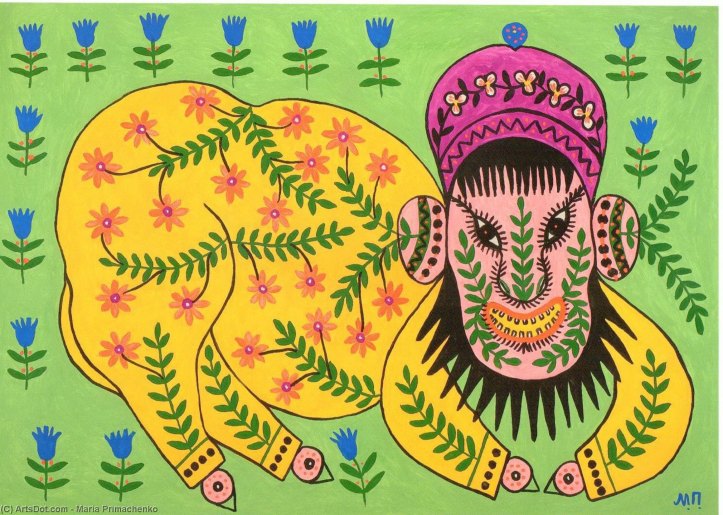 This Beast is Making Magic – Maria Primachenko. 1983. Wikioo.
This Beast is Making Magic – Maria Primachenko. 1983. Wikioo.
“I think my quarry is illusion. I war against magic. I believe that, though illusion often cheers and comforts, it ultimately and invariably weakens and constricts the spirit.”
Irvin D. Yalom
Psychotherapy is not suitable for everyone and depends very much on the patient’s willingness to engage in the process. In time, gaining the realisation that each person is responsible for their own self-development is a valuable and energy-giving aspect of the process. It validates us as unique individuals, supporting and affirming our self-determination.
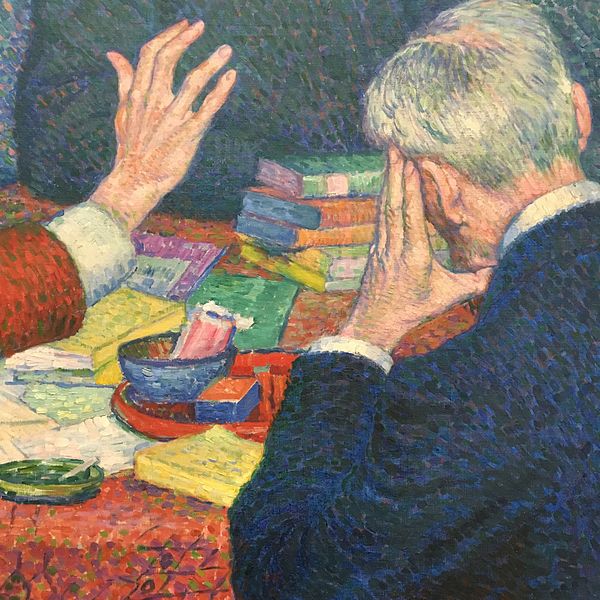
The Lecture by Emile Verhaeren (detail) 1903. Wikimedia Commons
“The patient needs an experience, not an explanation.”
Frieda Fromm-Reichmann
Many people come into therapy with the expectation that the therapist knows all the answers. However, therapy is not about learning in a teacher-pupil way; the insights come from within the patient, encouraged by a caring, empathic, aware and facilitative therapist, who can listen to the ‘music behind our words,’ and can notice the unconscious messages in our body language.
No psychotherapist should provide explanations or answers.
“… it is natural to want to demonstrate our competence, to show our patients that we have something to offer. This inclination can get in the way of maintaining enough reserve to let people make their own discoveries and come up with their own solutions to the problems in their lives.”
Nancy McWilliams, Psychoanalytic Psychotherapy: A Practitioner’s Guide
As the Fromm-Reichmann quotation above says, the patient needs an experience. What does this mean?
What is needed in therapy is an experience of a non-judgmental, enabling and empathic figure, who has trust in the patient in the therapy situation to be able to discover for themselves what they need and want in their lives.
People come to therapy for an experience that is different from what they have previously had. A know-all figure who comes up with suggestions and ‘solutions’ is very often replicating the experience many people have had in childhood, an experience that may have left them lacking confidence in their own abilities and always looking to others for help.
A one-up, one down, hierarchical relationship is not what therapy is about. It is likely to be a repetition for many people. A therapist who can be there for their patients, allowing others to make their own errors in a safe and warm atmosphere, is highly enabling and highly skilled.
“Success as a therapist is not found in doing something for the client, but rather in being something for the client.”
Ili Rivera Walter
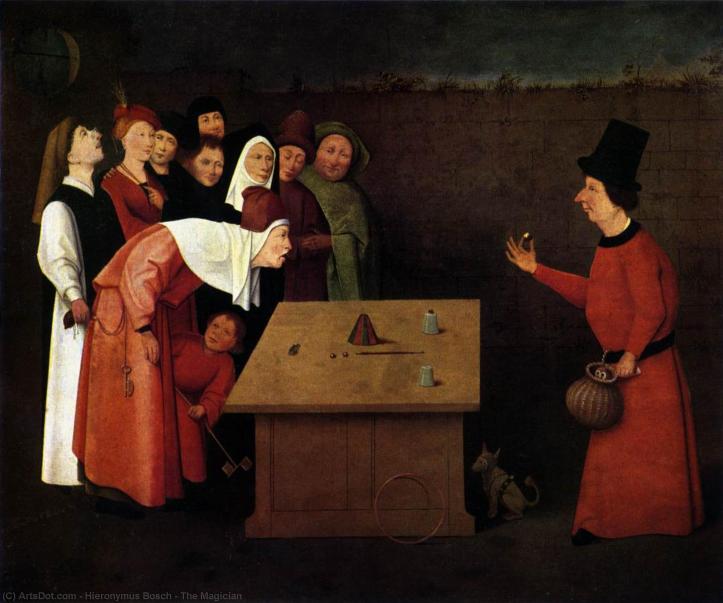 The Magician – Hieronymus Bosch. 1502. Wikioo.
The Magician – Hieronymus Bosch. 1502. Wikioo.
“The establishment of an authentic relationship with patients, by its very nature, demands that we forego the power of the triumvirate of magic, mystery, and authority.”
Irvin D. Yalom, The Gift of Therapy:
© Linda Berman.
